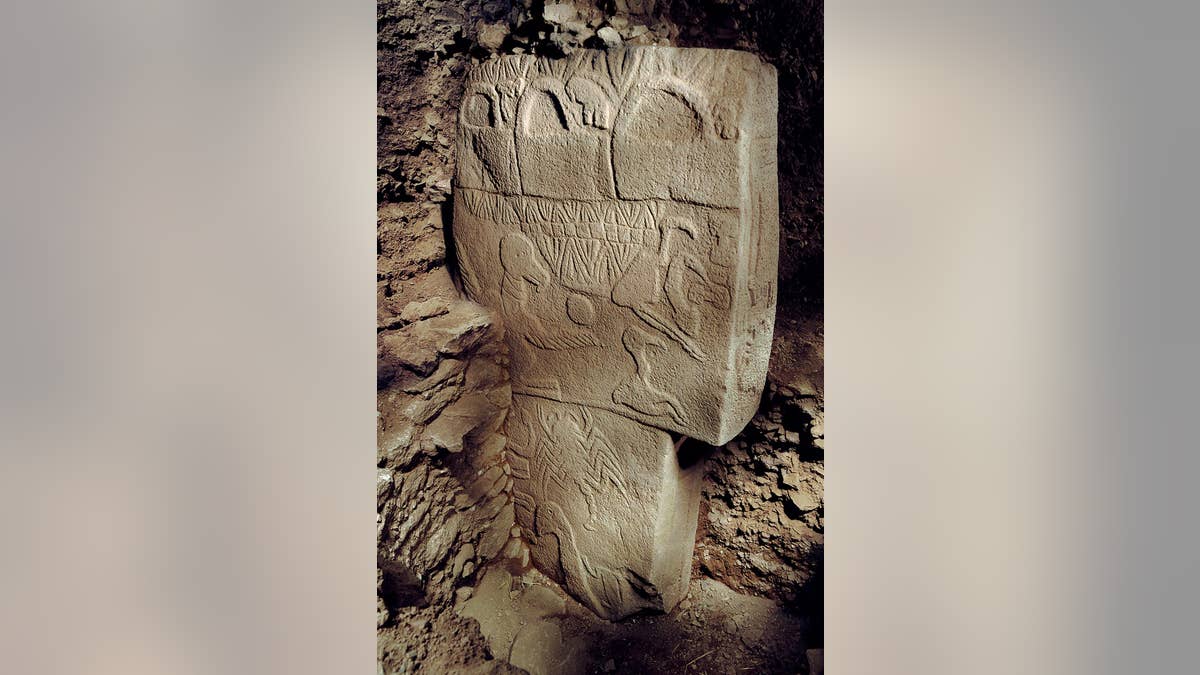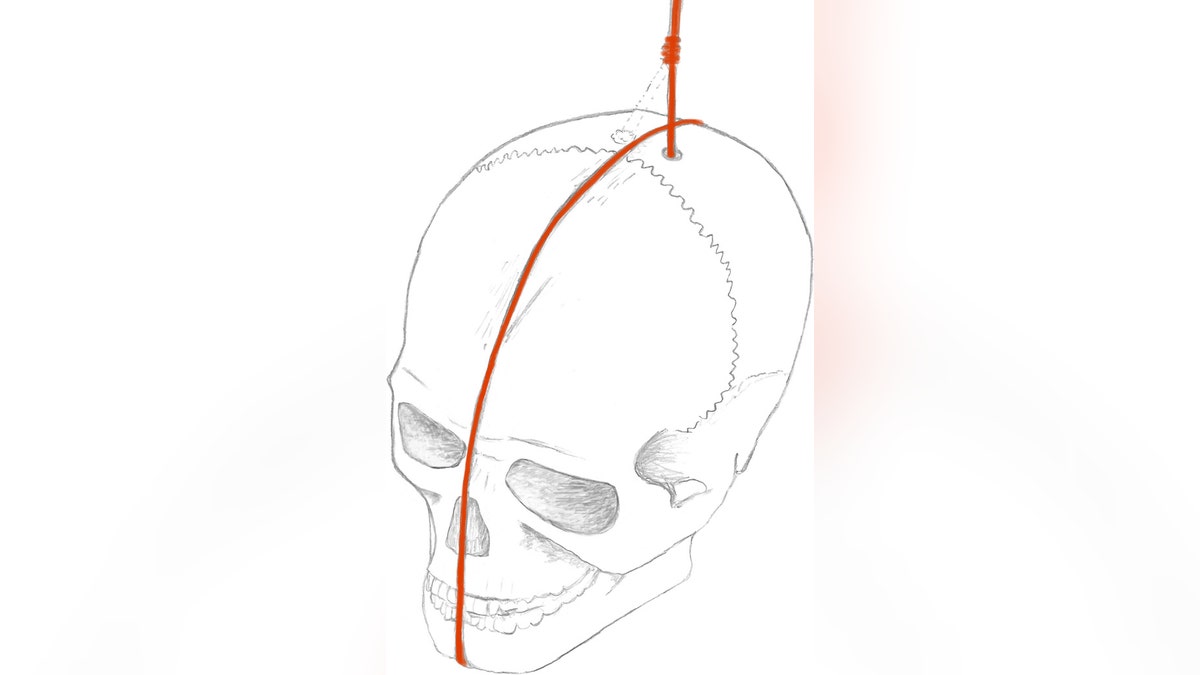
A pillar from Building D at Göbekli Tepe seen from the southeast (German Archaeological Institute DAI)
Archaeologists say that human skulls may have once decorated an ancient temple at Göbekli Tepe in Turkey.
Described as the world’s oldest temple, Göbekli Tepe in Southeast Turkey dates back approximately 11,500 years.
Three carved skull fragments were unearthed at the Neolithic dig site, according to research published in the journal Science Advances, potentially indicating a previously-unknown “skull cult” or ritual group.
BRONZE AGE CEMETERY DISCOVERED AT RITUAL SITE IN WALES

The skulls may have been used to venerate ancestors or as part of a display of dispatched enemies. “Throughout history, people have valued skulls for different reasons, from ancestor worship to the belief that human skulls transmit protective properties,” explained the researchers, in a press release.
Julia Gresky, an anthropologist at the German Archaeological Institute and the study’s lead author, observed the skulls with colleagues during research at Göbekli Tepe. Each skull had deep incisions and one had a hole drilled in it, as well as remnants of red ochre.
The marks were not the result of scalping, according to the experts, who noted the depth of the carvings. However, other smaller cut-marks on the skull show signs of possible “defleshing,” the researchers said.

YALE ARCHAEOLOGISTS MAKE AMAZING ANCIENT EGYPTIAN 'BILLBOARD' DISCOVERY
Microscopes were used to work out that the carvings were performed using stone tools, ruling out natural causes, such as animal bites or gnawing.
Researchers say that cords may have been used to hang the skulls. The three skulls are from adults aged between 20 and 50 years.
“These findings present the very first evidence for treatment of the dead at Göbekli Tepe,” the researchers said in the press release.




















